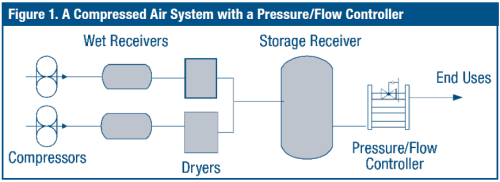Compressed Air Energy Storage (CAES)
Compressed Air Energy Storage (CAES) is a way to store energy generated at one time for use at another time. At utility scale, energy generated during periods of low energy demand (off-peak) can be released to meet higher demand (peak load) periods. Compression of air generates a lot of heat. The air is warmer after compression. Decompression requires heat. If no extra heat is added, the air will be much colder after decompression. If the heat generated during compression can be stored and used again during decompression, the efficiency of the storage improves considerably. There are three ways in which a CAES system can deal with the heat. Air storage can be adiabatic , diabatic , or isothermic : Adiabatic storage retains the heat produced by compression and returns it to the air when the air is expanded to generate power. This is a subject of ongoing study, with no utility scale plants as of 2010. Its theoretical efficiency approaches 100% for large and/or rapidly cycled devic...


